Page 121 of 288

Parallel parking
Applies to vehicles: with parking system p lus wit h rear
view ca mera
This view may be used when parallel parking
along the side of a street.
Fig. 107 MMI : blue su rface aligned wit h parking spot
Fig. 108 MMI: contac t o f t he b lue curved line w it h th e
c urb
Parking on the right is described here . It is
identical when parking on the left.
If there is an obstacle next to the parking
space (such as a wall), refer to "Information
for parking next to obstacles "¢
page 119.
.. Turn on the right turn signal.
.. Position your vehicle next to a parked vehi
cle in front of the desired parking space . The
distance to th is veh icle should be approxi
mately 3 ft (1 m) .
.. Turn the MMI on and select the reverse gear.
The parking system is turned on and the
cross parking indicator is displayed.
.. Press the control button on the MMI con
trols to select@¢
fig. 107. The parallel
parking
indicator is displayed .
.. Back up and align your vehicle so the blue
area @ borders on the rear end of the vehi
cle behind you or on the parking space line
¢.&. in General information on page 117,
Parking systems 119
¢ CD in General information on page 117.
The blue area represents an extension of the
veh icle's outline by approximate ly 16 ft (5
meters) to the rear. The long side of the
blue area should be on the curb. The entire
blue area must fit into the parking space .
.,. With the vehicle stopped, turn the steering
wheel to the right as far as it will go .
.. Back i nto the parking space unt il the blue
curve ¢
fig. 108 touches the curb ¢,&_ in
General information on page 117, ¢(Din
General information on page 117 .
Stop the
vehicle .
.. With the vehicle stopped, turn the steering
wheel to the left as far as it w ill go.
.. Continue to back into the parking space un
til the vehicle is parked parallel to the curb
¢ .&. in General information on page 117,
¢ CD in General information on page 117.
@ marks the rear bumper. Stop the vehicle,
at the latest, when the red orientat ion line
© borders an object . Keep an eye on the
front of your vehicle while doing this.
Parking next to obstacles
If there is an obstacle (such as a wall) next to
the parking space, position the vehicle so
there is more space on that side. Position the
lo ng side of the blue surface so that there is
sufficient space from the obstacle . The sur
face must not be touching. You will a lso need
to start turning the steering wheel much ear lier. The blue curve¢
fig. 108 must not touch
the obstacle and should have sufficient room .
(D Note
Remember to mainta in sufficient clear
ance from the curb to avoid damaging the
wheel rims .
{!) Tips
The left or right orientation lines and sur
faces will be displayed, depending on the
turn signal being used .
Page 122 of 288

120 Parking systems
Adjusting the display and the warning tones
App lies to vehicles: with par king system p lus/ rearview
camera
The display and warning tones can be adjust
ed in the MMI.
.. Se lect : IMENUI button> Systems control
button or
Car systems > D riv e r assistance >
Parking aid .
Display
On* -
An opti cal d isp lay is shown for the park
ing system p lus, a rearview camera image is
shown fo r parking system plus with rearview
camera*.
Off -When the parking system is sw itched off,
on ly audib le signa ls are given.
Warning tones
Front volume -
Volume fo r th e fro nt and s ide*
a rea
Rear volume -Volume for the rear area
Front frequency -Frequency for the front and
side* area
Rear frequency -Frequency for the rear area
Entertainm ent volume -When the parki ng
sys tem is tu rned o n, the vol ume o f the aud io/
video source is lowe red.
The new ly adjust ed value is briefly heard from
the signa l gene rato r.
- The wa rning tones can a lso be adjusted
directly from the visual display or the r earview camera image*. Simply press
t he
Settings con tro l button.
- The settings a re automatically stored
and ass igned to the remote control key
t ha t is in use.
Error messages
Applies to vehicles: wi th parking syste m plus/ rea rview
camera
T he re is an error in the system if t he LE D i n
the
p, q~ button is bl ink ing and yo u hear a con
t inu ous al arm for a few se conds after switch
i ng on the park ing system or when the park
ing system is already activated. If the error is
not co rrected before you switch off the igni
t ion, the LED in the
P'#A button wi ll blink the
next time you switch on the parking system by
shifting in to reverse.
Parking system plu s*
If a sensor is faulty, th e~ symbol will a ppear
in front of/behind the vehicle in the MMI dis
play. If a rear sensor is faulty, only obstacles
that are in areas @ and @ are shown
Q page 115, fig. 98. If a front sensor is faulty,
o n ly obstacles that a re in a reas © and @are
shown .
Drive to an authorized Audi dealer or qualified
repair fac ility immediately to have the mal
funct ion corrected.
Page 123 of 288

Driving safety
General notes
Safe driving habits
Please remember -safety first!
This chapter contains important information,
tips, instructions and warnings that you need
to read and observe for your own safety, the
safety of your passengers and others . We have
summarized here what you need to know
about safety belts, airbags, ch ild restraints as
well as child safety. Your safety is fo r us
priori
ty number 1.
Always observe the information
and warnings in this sect ion - for yo ur own
safety as well as that of your passengers.
The information in this section app lies to all
model ve rsions of your vehicle . Some of the
feat ures described in this sections may be
standard equipment on some models, or may
be optional equipment on others. If you are
not sure, ask your authorized Audi dea ler.
A WARNING
- Always make sure that you follow the in
struct ions and heed the WARNINGS in
this Manual. It is in your interest and in
the interest of your passengers.
- Always keep the complete Owner's Liter
ature in your Audi when you lend or sell
your vehicle so that this important infor
mation will always be ava ilable to the
dr iver and passengers.
- Always keep the Owner's literature handy
so that you can find it eas ily if you have
questions.
- Always adjust your speed to the weather
traffic and conditions. Follow the speed
limits.
- Always drive in such a way that you can
stop your vehicle safely .
- Always adjust your speed to the general
flow of traffic. Fo llow the speed limits.
Dri ving sa fe ty 12 1
Safety equipment
The safety features are part of the occupant
restraint system and work together to help
reduce the risk of injury in a wide variety of
accident situations.
Your safety and the safety of your passengers
should not be left to chance . Advances in
techno logy have made a variety of features
available to help reduce the risk of injury in an
acc ident. The following is a list of just a few of
the safety features in yo ur Audi :
- sophisticated safety be lts fo r driver and all
passenger seating posit ions,
- safety belt pretens ioners for the front seats,
- safety belt he ight adjustment systems for
the front seats ,
- front airbags,
- knee airbags for the front seats*
- side airbags in the front seats and outer rear
seats*,
- side curtain airbags with ejection mitigation
features,
- specia l LATCH anchorages for child re-
straints,
- head restraints for each seating position,
- adjustab le steering col umn.
- Pre sense basic* (preventat ive passenger
protection)
These ind iv idual safety features, can work to
gether as a system to he lp protect you and
you r passenge rs in a wide range of accide nts .
T hese features canno t work as a system if
they a re not always cor rectly adjus ted and co r
r ect ly used.
Saf ety is e ve ryb ody 's res ponsibil ity!
Important things to do before driving
Safety is everybody's job ! Vehicle and occu
pant safety always depends on the informed and careful driver.
For your safety and the safety of your passen
gers,
b efor e dr iving alwa ys:
.,. Make sure that all lig hts and signals are op
erati ng correctly . •
•
•
Page 124 of 288

122 Driving safety
• Make sure that the tire pressure is correct.
• Make sure that all windows are clean and af
ford good visib ility to the outside .
• Secure a ll luggage and other items carefully
r:=:> page 60, r:=:> page 58.
• Make sure that noth ing can interfere wit h
the pedals.
• Adjust front seat , head restraint and mirrors
correctly for your he ight.
• Instruct passengers to adjust the head re
stra ints according to their height.
• Make sure to use the right child restraint
correct ly to protect children
r:::;, page 166,
Child Safety .
• Sit properly in your seat and make sure that
your passengers do the same
r=:> page 53,
Front seats.
• Fasten your safety belt a nd wear it properly .
Also instruct your passengers to fasten th eir
safety belts properly
r:::;.page 131 .
What impairs driving safety?
Safe driving is directly related to the condi
tion of the vehicle, the driver as well as the
driver 's ability to concentrate on the rood
without being distracted.
The driver is respons ible for the safety of the
vehicle and all of its occupants.
If your ability
to drive is impa ired, safety r isks for everybody
in the vehicle increase and yo u also become a
hazard to everyone else on the road
r:::;, &,.
Therefore:
• Do not let yourself be dis tracted by passe n
gers or by using a cellular telephone.
• NEVER drive when your driving ability is im
paired (by medications, alcohol, drugs, etc.).
• Observe all traffic laws, rules of the road
and speed limits and plain common sense.
• ALWAYS adjust your speed to road, traffic
and weather condit ions .
• Take frequent breaks on long trips . Do not
dr ive for more than two hours at a stretc h.
• Do NOT drive when you are t ired, under
pressure or when you are st ressed.
A WARNING
-Impaired dr iving safety increases the risk
of ser ious personal injury and death when
ever a vehicle is being used.
Proper occupant
seating positions
Proper seating position for the driver
The proper driver seating position is impor
tant for safe, relaxed driving.
Fig . 109 Correct seat ing posit ion
For your own safety and to reduce the risk of
injury in the event of an accident, we recom
mend that you adjust the driver's seat to the
following position:
.,. Adjust the driver's seat so that you can easi
ly push the pedals all the way to the floor
while keeping your knee(s) slightly bent
r:::;,A .
.,. Adjust the angle of the seatback so that it is
in an upright position so that your back
comes in full contact with it when you drive.
• Adj ust the steering wheel so that there is a
distance of at least 10 inches (25 cm) be
tween the steering wheel and your breast
bone
c:::> fig. 109 . If not possible, see your au
thorized Audi dealersh ip about adaptive
equ ipment .
.. Adjust the steering wheel so that the steer
ing wheel and airbag cover points at your
chest and not at your face.
• Grasp the top of the steering whee l with
your elbow(s) slightly bent .
• For adjustable head restraints: Adjust the
head restraint so the upper edge is as even
as possible with the top of your head. If that..,_
Page 125 of 288

is not possible, try to adjust the head re
straint so that it is as close to this position
as possible. Move the head restraint so that
it is as close to the back of the head as pos
sible.
.. Fasten and wear safety belts correctly
Q page 134.
.. Always keep both feet in the footwell so
that you are in control of the vehicle at all
times.
For detailed information on how to adjust the
driver's seat, see
Q page 54 .
.&, WARNING
Drivers who are unbelted, out of position
or too close to the airbag can be seriously
injured by an airbag as it unfolds. To help
reduce the risk of serious personal injury:
- Always adjust the driver's seat and the
steering wheel so that there are at least
10 inches (25 cm) between your breast
bone and the steering wheel.
- Always adjust the driver's seat and the
steering wheel so that there are at least
4 inches (10 cm) between the knees and
the lower part of the instrument panel.
- Always hold the steering wheel on the
outside of the steering wheel rim with
your hands at the 9 o'clock and 3 o'clock positions to help reduce the risk of per
sonal injury if the driver's airbag inflates.
- Never hold the steering wheel at the
12 o'clock position or with your hands at
other positions inside the steering wheel
rim or on the steering wheel hub. Hold
ing the steering wheel the wrong way
can cause serious injuries to the hands,
arms and head if the driver's airbag in
flates.
- Pointing the steering wheel toward your
face decreases the ability of the supple
mental driver's airbag to protect you in a
collision.
- Always sit in an upright position and nev
er lean against or place any part of your
body too close to the area where the air
bags are located.
-
Driving safety 123
-Before driving, always adjust the front
seats properly and make sure that all passengers are properly restrained.
- For adjustable head restraints: before
driving, always also adjust the head re
straints properly.
- Never adjust the seats while the vehicle is moving. Your seat may move unexpect
edly and you could lose control of the ve hicle.
- Never drive with the backrest reclined or
tilted far back! The farther the backrests are tilted back, the greater the risk of in
jury due to incorrect positioning of the safety belt and improper seating posi
tion.
- Children must always ride in child seats
Q page 166. Special precautions apply
when installing a child seat on the front
passenger seat ¢
page 140.
Proper seating position for the front
passenger
The proper front passenger seating position
is important for safe, relaxed driving.
For your own safety and to reduce the risk of
injury in the event of an accident, we recom
mend that you adjust the seat for the front
passenger to the following position:
.. Adjust the angle of the seatback so that it is
in an upright position and your back comes
in full contact with it whenever the vehicle is
moving.
.. For adjustable head restraints: adjust the
head restraint so the upper edge is as even
as possible with the top of your head. If that
is not possible, try to adjust the head re
straint so that it is as close to this position
as possible
¢ page 125. Move the head re
straint so that it is as close to the back of
the head as possible .
.. Keep both feet flat on the floor in front of
the front passenger seat.
.. Fasten and wear safety belts correctly
¢page 134.
•
•
•
Page 126 of 288

124 Driving safety
For detailed information on how to adjust the
front passenger's seat, see ¢
page 53.
A WARNING
Front seat passengers who are unbelted,
out of position or too close to the airbag
can be seriously injured or killed by the air
bag as it unfolds. To help reduce the risk of
serious personal injury:
- Passengers must always sit in an upright
position and never lean against or place
any part of their body too close to the
area where the airbags are located.
- Passengers who are unbelted, out of po
sition or too close to the airbag can be
seriously injured by an airbag as it un
folds with great force in the blink of an
eye.
- Always make sure that there are at least
10 inches (25 cm) between the front
passenger's breastbone and the instru
ment panel.
- Always make sure that there are at least
4 inches (10 cm) between the front pas
senger's knees and the lower part of the
instrument panel.
- Each passenger must always sit on a seat
of their own and properly fasten and
wear the safety belt belonging to that
seat.
- Before driving, always adjust the front
passenger seat properly .
- For adjustable head restraints: before
driving, always also adjust the head re
straints properly.
- Always keep your feet on the floor in
front of the seat. Never rest them on the
seat, instrument panel, out of the win
dow, etc. The airbag system and safety
belt will not be able to protect you prop
erly and can even increase the risk of in
jury in a crash .
- Never drive with the backrest reclined or
tilted far back! The farther the backrests are tilted back, the greater the risk of in
jury due to incorrect positioning of the
safety belt and improper seating posi
tion. -
Children must always ride in child seats
¢
page 166. Special precautions apply
when installing a child seat on the front passenger seat
c> page 140.
Proper seating positions for passengers
in rear seats
Rear seat passengers must sit upright with
both feet on the floor consistent with their
physical size and be properly restrained whenever the vehicle is in use.
To reduce the risk of injury caused by an incor
rect seating position in the event of a sudden
braking maneuver or an accident, your pas
sengers on the rear bench seat must always
observe the following:
"" For adjustable head restraints: adjust the
head restraint so the upper edge is as even
as possible with the top of your head. If that
is not possible, try to adjust the head re
straint so that it is as close to this position
as possible
¢ page 125.
.,. Keep both feet flat in the footwell in front of
the rear seat.
.,. Fasten and wear safety belts properly
¢page 134.
.,. Make sure that children are always properly
restrained in a child restraint that is appro
priate for their size and age¢
page 166.
A WARNING
Passengers who are improperly seated on
the rear seat can be seriously injured in a
crash.
- Each passenger must always sit on a seat
of their own and properly fasten and
wear the safety belt belonging to that
seat.
- Safety belts only offer maximum protec
tion when the safety belts are properly positioned on the body and securely
latched. By not sitting upright, a rear
seat passenger increases the risk of per
sonal injury from improperly positioned
safety belts!
Page 127 of 288

-For adjustable head restraints: always
adjust the head restra int properly so that
it can give maximum protection.
Proper adjustment of head restraints
Applies to vehicles: with adjustable head restraints
Correctly adjusted head restraints are an im
portant part of your vehicle's occupant re
straint system and can help to reduce the risk of injuries in accident situations.
Fig. 110 Head restraint: v iewed from t he front
The head restraints must be correctly adjust
ed to achieve the best protection.
.,. Adjust the head restraint so the upper edge
is as even as poss ible with the top of your
head.
If that is not possible, try to adjust
the head restraint so that it is as close to
this position as possible
r:!.> fig . 110. Move
the head restraint so that it is as close to the
back of the head as possible.
.,. If there is a passenger on the rear center
seat ing position, slide the center head re
stra int upward at least to the next notch .
Adjusting head restraints ¢
page 55.
_& WARNING
All seats are equipped with head re
straints. Dr iving without head restraints or
w ith head restraints that are not properly
adjusted increases the risk of serious or fa
tal neck injury dramat ically . To help reduce
the risk of injury:
- Always drive with the head restraints in
place and properly adjusted.
- Every person in the veh icle must have a
properly ad justed head restra int.
Driving safety 125
-Always make sure each person in the ve
hicle properly ad justs their head re
straint. Adjust the head restraint so the
upper edge is as even as possible with
the top of your head.
If that is not possi
ble, try to adjust the head restraint so
that it is as close to this position as pos
sible. Move the head restraint so that it
is as close to the back of the head as pos
sible.
- Never attempt to adjust head restraint
while driving. If you have driven off and
must adjust the driver headrest for any
reason, first stop the vehicle safely be
fore attempting to adjust the head re
straint .
- Ch ildr en must a lways be properly re
strained in a child restraint that is appro
priate for their age and size¢
page 166.
Examples of improper seating positions
The occupant restraint system can only re
duce the risk of injury if vehicle occupants are
properly seated .
Improper seating positions can cause serious
injury or death. Safety belts can only work
when they are properly positioned on the body. Improper seating positions reduce the
effectiveness of safety belts and will even in
crease the r isk of injury and death by mov ing
the safety belt to crit ical areas of the body.
Improper seating positions a lso inc rease the
risk of serious injury and death when an air
bag deploys and strikes an occupant who is
not in the proper seating position . A driver is
responsible for the safety of all veh icle occu
pants and espec ially for children. Therefore :
.,. Never allow anyone to assume an incorrect
seating position when the vehicle is being
used
r:!.> _&. .
The following bulletins list only some sample
positions that will increase the risk of serio us
injury and death. Our hope is that these exam
ples will make yo u more aware of seating po-
sitions that are dangerous. ..,.
Page 128 of 288

126 Driving saf ety
Th ere fo re, wh enever th e vehicle i s
mo ving :
-never stand up in the vehicle
- never stand on the seats
- never knee l on the seats
- never ride with the seatback reclined
- never lie down on the rear seat
- never lean up aga inst the instrument panel
- never sit on the edge of the seat
- never sit sideways
- never lean out the w indow
- never put your feet out the window
- never put your feet on the instrument panel
- never rest your feet on the seat cushion o r
back of the seat
- never ride in the footwell
- never ride in the cargo area
A WARNING
Improper seat ing positions increase the
r isk of serious personal injury and death
whenever a veh icle is being used .
- Always make sure that all vehicle occu pants stay in a proper seating pos it ion
and are properly restra ined whenever the
vehicle is be ing used.
Driver and passenger
side footwell
Important safety instructions
App lies to vehicles: with knee a irbags
A WARNING
Always make s ure that the knee airbag can
inflate without interference. Objects be
tween yourse lf and the airbag can inc rease
the risk of in jury in an acc ident by interfer
ing w ith the way the a irbag deploys or by
being pushed into you as the airbag de
ploys.
- No persons (ch ildren) or animals should
ride in the footwell in front of the pas
senger seat. If the airbag deploys, this
can result in se rious or fata l injuries.
- No objects of any kind should be carried in the footwe ll area in front of the driv- er's or passenger's seat
. Bulky objects
(shopping bags, for example) can ham
per or prevent proper deployment of the
ai rbag. Small objects can be thrown
through the vehicle if the airbag deploys
and i njure you or your passenge rs .
Pedal area
Pedals
The pedals must always be free to move and
must never be interfered with by a floor mat
or any other object.
Make su re that a ll peda ls move free ly without
i nterference and that no thing preven ts them
from return ing to their or ig inal positions .
Only use f loor mats that leave the pedal a rea
free and can be secu red with floor mat fasten
ers.
If a brake c ircu it fa ils, inc reased brake pedal
t ravel is required to bring the vehicle to a full
stop.
A WARNING
P edals that cannot move free ly can ca use
l oss of vehicle contro l and increase the risk
of serious injury.
- Never p lace any objects in the driver's
footwell. An object co uld get into the
pedal area and interfere with pedal func
tion. In case of sudden braking or an ac
cident, you wou ld not be able to brake or
accelerate!
-Always make sure that nothing can fall
or move into the driver's footwell.
Floor mats on the driver side
Always use floor mats that can be securely attached to the floor mat fasteners and do
not interfere with the free movement of the
pedals.
.,. Make sure that the floor mats are properly
secured and cannot move and interfere with
the pedals
¢ A . ..,_
 1
1 2
2 3
3 4
4 5
5 6
6 7
7 8
8 9
9 10
10 11
11 12
12 13
13 14
14 15
15 16
16 17
17 18
18 19
19 20
20 21
21 22
22 23
23 24
24 25
25 26
26 27
27 28
28 29
29 30
30 31
31 32
32 33
33 34
34 35
35 36
36 37
37 38
38 39
39 40
40 41
41 42
42 43
43 44
44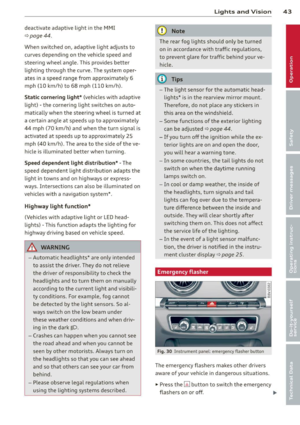 45
45 46
46 47
47 48
48 49
49 50
50 51
51 52
52 53
53 54
54 55
55 56
56 57
57 58
58 59
59 60
60 61
61 62
62 63
63 64
64 65
65 66
66 67
67 68
68 69
69 70
70 71
71 72
72 73
73 74
74 75
75 76
76 77
77 78
78 79
79 80
80 81
81 82
82 83
83 84
84 85
85 86
86 87
87 88
88 89
89 90
90 91
91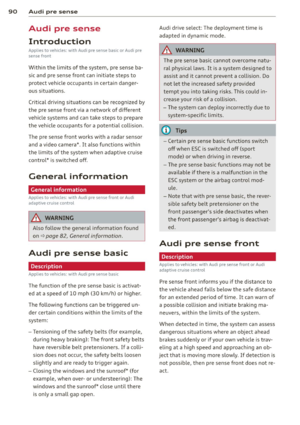 92
92 93
93 94
94 95
95 96
96 97
97 98
98 99
99 100
100 101
101 102
102 103
103 104
104 105
105 106
106 107
107 108
108 109
109 110
110 111
111 112
112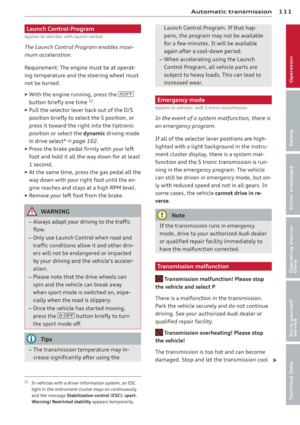 113
113 114
114 115
115 116
116 117
117 118
118 119
119 120
120 121
121 122
122 123
123 124
124 125
125 126
126 127
127 128
128 129
129 130
130 131
131 132
132 133
133 134
134 135
135 136
136 137
137 138
138 139
139 140
140 141
141 142
142 143
143 144
144 145
145 146
146 147
147 148
148 149
149 150
150 151
151 152
152 153
153 154
154 155
155 156
156 157
157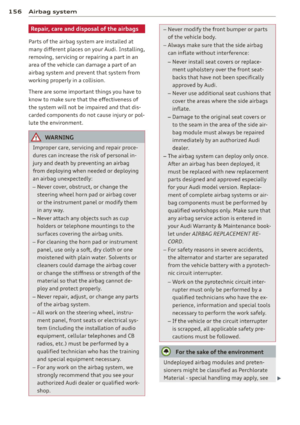 158
158 159
159 160
160 161
161 162
162 163
163 164
164 165
165 166
166 167
167 168
168 169
169 170
170 171
171 172
172 173
173 174
174 175
175 176
176 177
177 178
178 179
179 180
180 181
181 182
182 183
183 184
184 185
185 186
186 187
187 188
188 189
189 190
190 191
191 192
192 193
193 194
194 195
195 196
196 197
197 198
198 199
199 200
200 201
201 202
202 203
203 204
204 205
205 206
206 207
207 208
208 209
209 210
210 211
211 212
212 213
213 214
214 215
215 216
216 217
217 218
218 219
219 220
220 221
221 222
222 223
223 224
224 225
225 226
226 227
227 228
228 229
229 230
230 231
231 232
232 233
233 234
234 235
235 236
236 237
237 238
238 239
239 240
240 241
241 242
242 243
243 244
244 245
245 246
246 247
247 248
248 249
249 250
250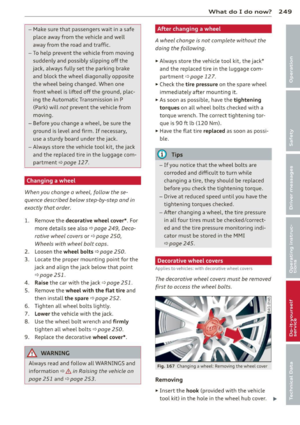 251
251 252
252 253
253 254
254 255
255 256
256 257
257 258
258 259
259 260
260 261
261 262
262 263
263 264
264 265
265 266
266 267
267 268
268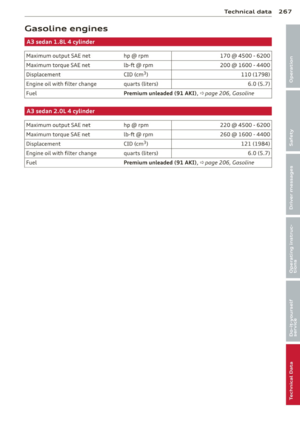 269
269 270
270 271
271 272
272 273
273 274
274 275
275 276
276 277
277 278
278 279
279 280
280 281
281 282
282 283
283 284
284 285
285 286
286 287
287






